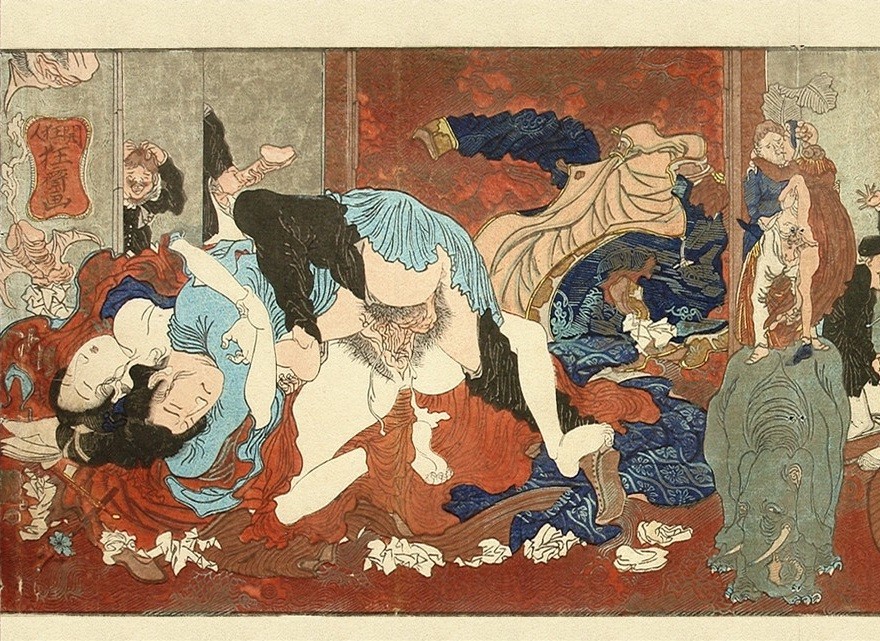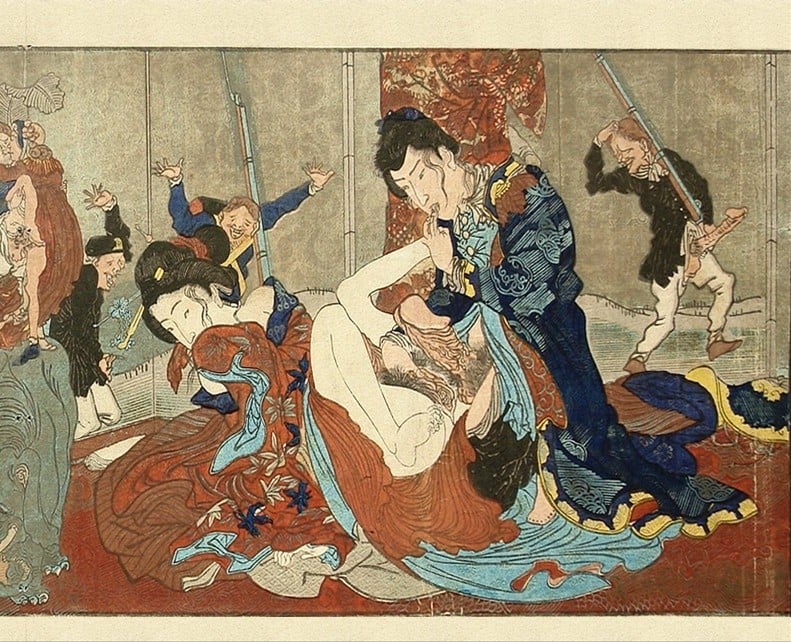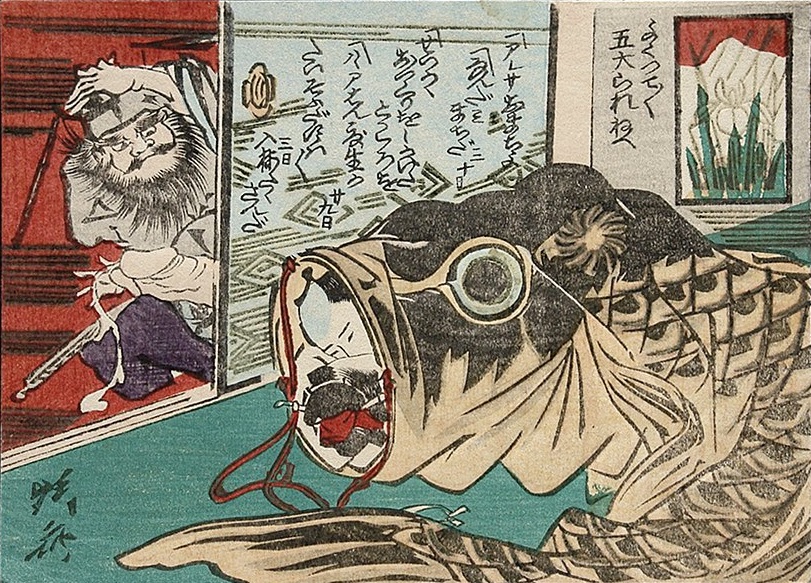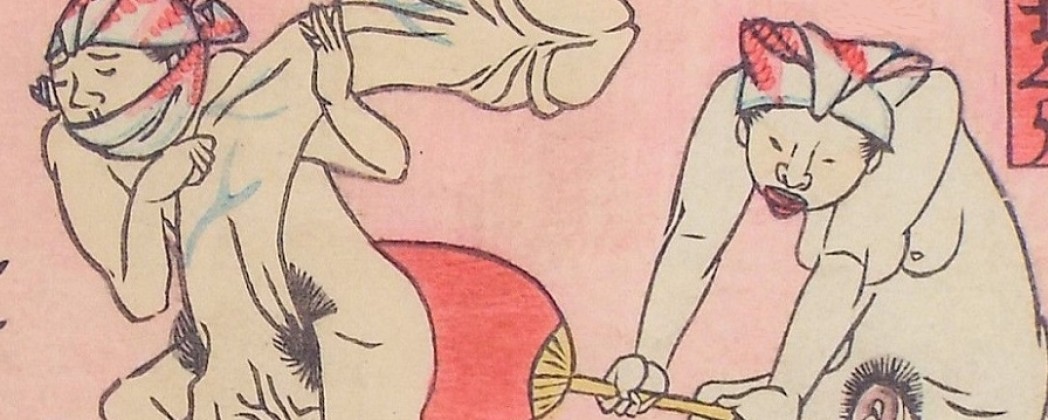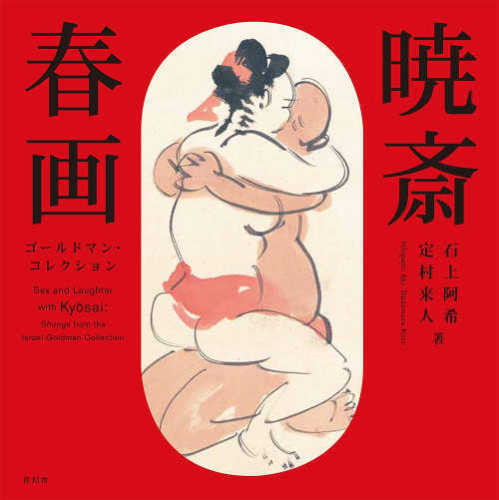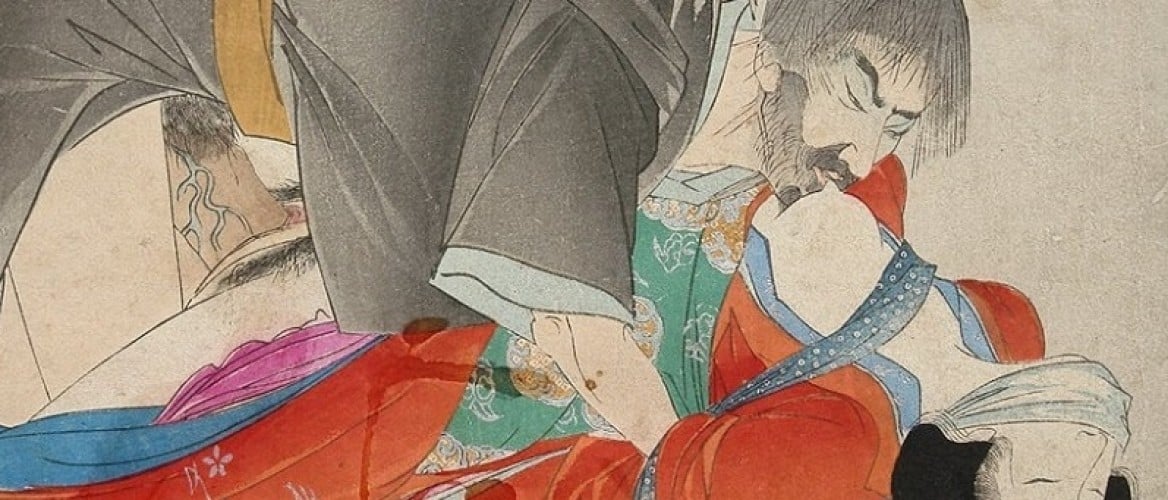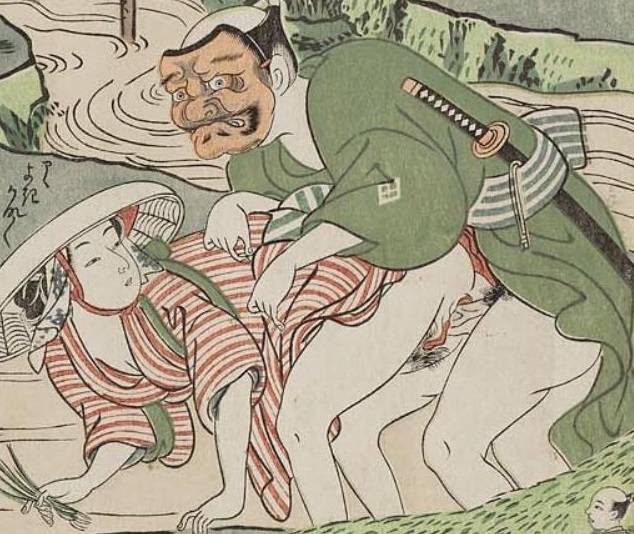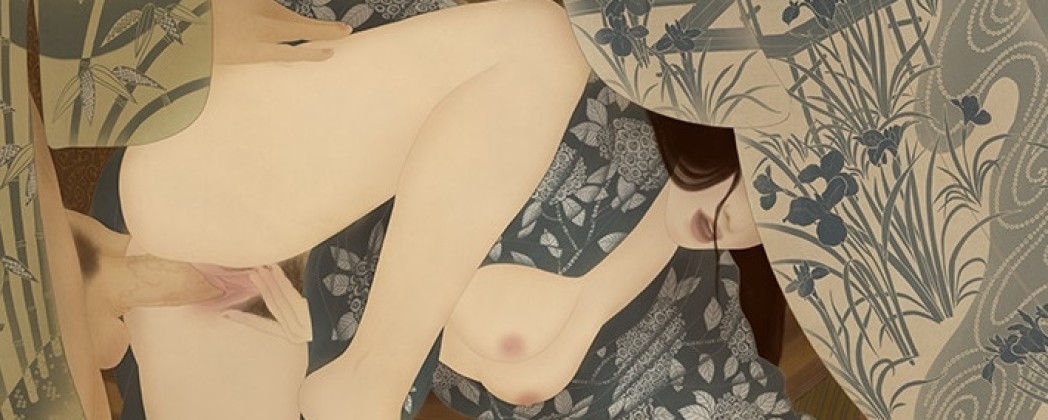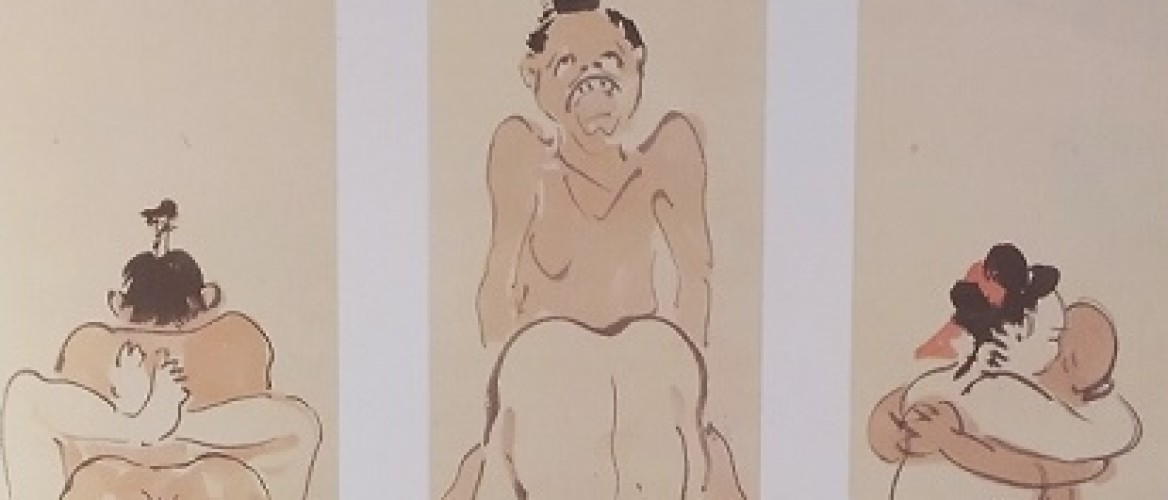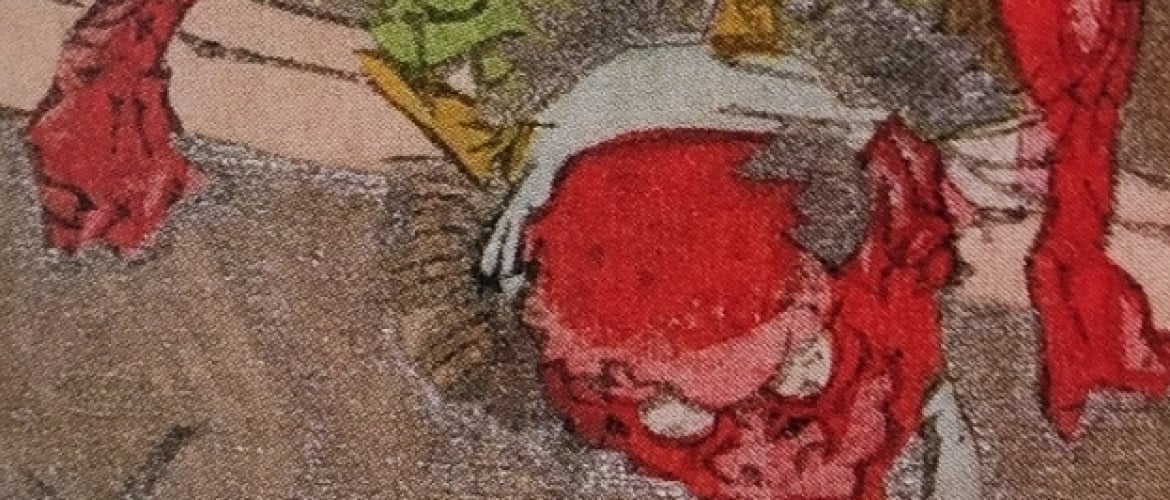
One of the last shunga masterpieces of the late Edo period, the great fold-out scene below by the brilliant artist Kawanabe Kyōsai (1831-1889) is both part of the series ‘Kiyomizu tsuya monogatari (Tale of a Night in Kiyomizu)‘ and ‘Renrino eda hiyoku no maki (Scrolls of Inseparable Lovers)‘ both issued in October 1867.
Curious Symbolism
For this project, Kyōsai collaborated with Koikawa Shōzan (1821-1907) and produced 3 other scroll scenes. These were luxuriously printed with fine details and coloration including gold and silver pigments. The jumbled imagery creates a rather bizarre atmosphere: in the foreground orgiastic scenes of men in western-style clothing and women in both Japanese and western-style dress; and in the background, European-style sculptures and curious symbolism.

Fig.1. Scroll scene with ‘Dancing invisible spirit and small elephant‘ (1867) from the series ‘Kiyomizu tsuya monogatari (Tale of a Night in Kiyomizu)‘ by Kawanabe Kyōsai (Sold)
Hieronymous Bosch
In this scene (Fig.1) we are exposed to a marvelous Hieronymus Bosch-esque composition portraying a Western couple having sex on the top of a small elephant, a soldier with a rifle slung over on his shoulder.
Bodiless Costume
The dancing bodiless (spirit) costume is probably a satirical reference to the imprudence of the government. At the end of the picture we can see a winged penis and vagina. The penis itself recalls the fascinum, an ancient Roman phallic charm, but the flying pair together perhaps represents a parody of Christian cherubs.
Seduce Any Woman
The preface to the scroll (not depicted here!) mentions “military drills and tactics” and claims that the scroll will help the viewer to seduce any woman without needing to learn from “people from other countries.” This probably refers to the French military instructions introduced to the shogun’s military in 1866, a year before this scroll was possibly made.
Instinctively
This shunga seems to poke fun at the social conditions at that time but it is difficult to understand the meaning behind all the displayed details. Kyōsai might have borrowed them from foreign resources and placed them instinctively as background elements.
Click HERE for more sensual imagery by Kyōsai…..!!
The above scene was sold recently but you can still obtain one of the other masterpiece in our gallery.…!!
Source: ‘Sex and Laughter with Kyōsai: Shunga from the Israel Goldman Collction‘ by Ishigami Aki and Sadamura Koto

